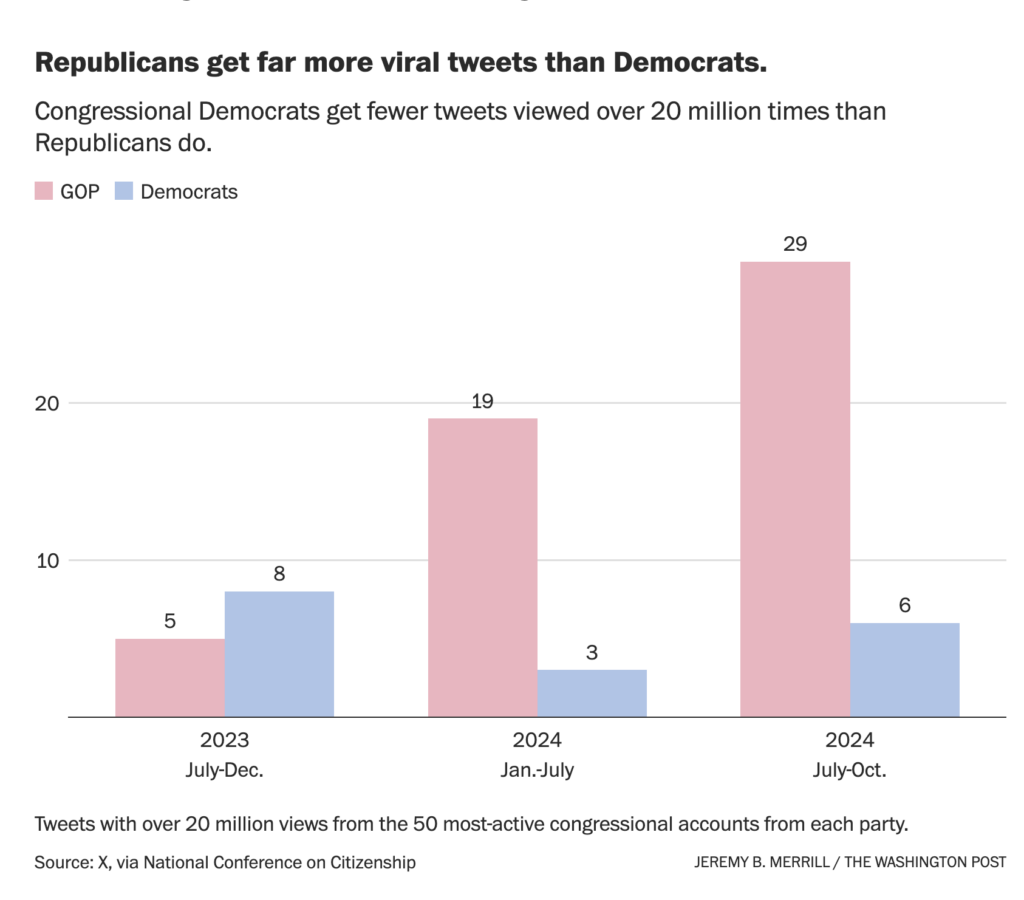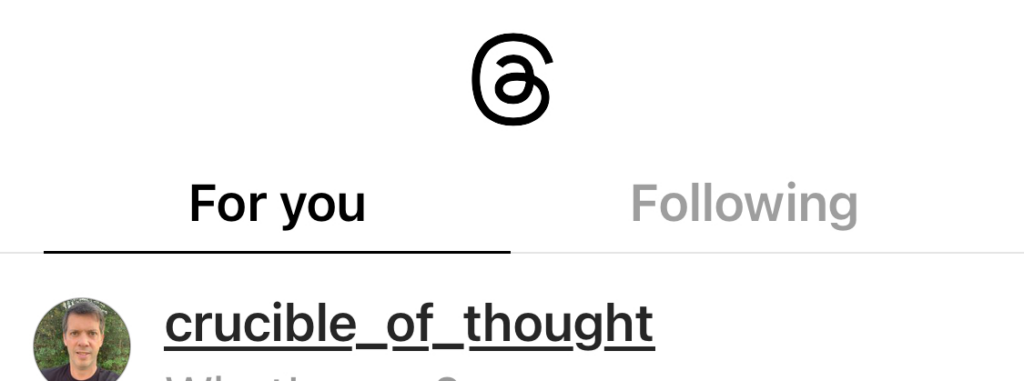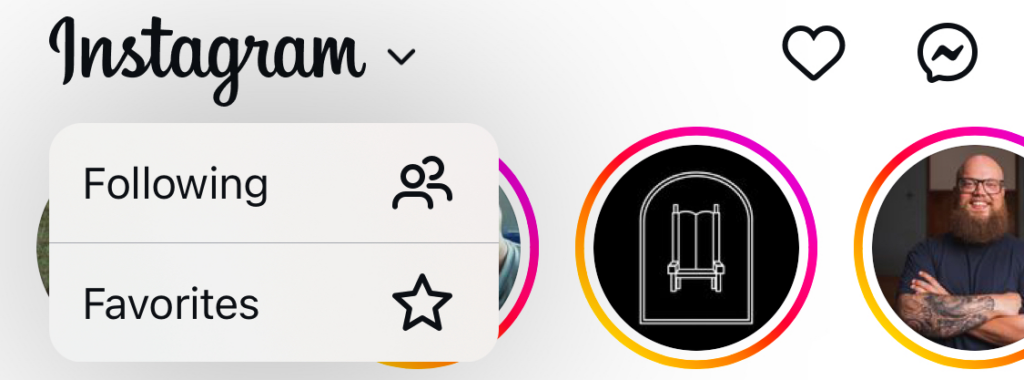
“What if I told you everything you knew is a lie?”
Well, perhaps that’s overstating things. A lot. Actually, unlike what a lot of people think, that quote isn’t actually in “The Matrix.” But the idea sure is. It’s not just some imaginary dystopia, and I think it’s incredibly relevant to us, today.
Because we’re all being ruled by AI, already.


No, seriously. The Matrix may be a science fiction story, but “The Algorithm” is real, and it affects all of us, every day, in more ways than I think we’re aware, and I want to talk about that for a few minutes. We tend to discount AI as still being an immature technology, mostly just useful for compiling information and spitting it back out, but that kind of software is already hard at work on almost every news or social feed with which we interact today. Most of us don’t think about the fact that every time we open Facebook, or Instagram, or Twitter, or Threads, or TikTok, not to mention most news websites, what we see has been carefully curated just for our individual consumption.
“That’s great,” you may say – “I’m getting the exact content I want to see!”
Except you aren’t.
You’re getting what someone else wants you to see, and while that may include what you think you want (to keep you coming back) it’s also heavily filled with attention-grabbing and propagandistic info.
Remember, you’re the product, not the customer.
Some programming team for each and every social media app has created an algorithm that takes into account, yes, the kinds of content you’ve liked and swiped right or swiped left, but also – and much more importantly – what that platform wants for you. And they’re constantly tweaking it to make it more profitable for them, and more captivating for you – even if they have to warp reality to do it.

For example, if you’re a Twitter user right now, regardless of your prior content choices, that algorithm is deliberately lowering the chances that you’ll see anti-Trump and anti-Elon content, and raising the chances you’ll get conservative content in your feed. It gives extra weight to content promoted by advertisers. It especially gives a lot of extra weight to content that has proven to be inflammatory, meaning that trolls and antagonists are being shown at much higher rates than would be otherwise seen by purely averaging all the content that’s available.
And this kind of content shaping is very intentional: to keep you engaged. Outrage causes people to interact, which makes them either respond or to share, which brings more page views, which brings money to the platform through advertising views.
And it also allows foreign nations and troublemakers access to your brain and emotions. Troll accounts can easily pollute our feed by crafting content that encourages interaction, and can use that ability to shape our national discussion – and arguments. Social media has given enemies of our nation unprecedented access directly into our minds and our national dialogue.
Let me switch gears for a moment, and share a bit of my personal story here.
For decades – something like 40 years – I swam in a sea of conservative thinking, without understanding exactly how specifically my worldview was shaped by that sea of thinking. I listened to conservative talk radio hosts like Rush Limbaugh and Sean Hannity and G. Gordon Liddy for at least 20 years, getting their viewpoint pumped into my ears for many hours a week. As a result, there were many things I grew up accepting as undeniable facts:
- Democrats hated America
- Democrats hated liberty and wanted to make us another USSR
- Democrats wanted to kill babies, even after they were born
- Democrats hated Black people and wanted to subjugate them even further
- Republicans were the only ones that had an answer to society’s problems
- Trickle-down economy was the only way to save America’s financial future
- Welfare was inherently evil
- Any form of public assistance was a step onto the slippery slope of communism
- Obamacare was a devilish plan to take away medical choice and bankrupt our nation
- Cutting taxes on the wealthy was the way to build the American economy
- Climate change is a complete hoax and a plan to bankrupt American businesses and take away people’s choice of cars and appliances
- More fossil fuels is the only way to provide inexpensive power to drive the economy
It never really occurred to me that rational, thoughtful, moral, upstanding, good-hearted people could disagree with any of these points. I mean, once, back in college in the late 1980s, I’d met a Democrat who called himself a Christian, but he was surely an outlier; I quickly discounted his credibility in my mind. I was quite convinced only Republicans could truly be Christian, and could truly care about America.
But because of what happened to me in 2018-2020, I began to see that this sea of assumptions and values and beliefs was very one-sided. I honestly don’t care much at the moment about whether you and I may disagree about any of these specific beliefs; my point is that I was so deeply immersed in one particular kind of media consumption that I never heard any of the careful and thoughtful rebuttals and counterpoints to these dogmatic assertions.
And that was way back before social media. But whatever media empire we followed – be it Rush Limbaugh or NBC News – deliberately shaped the story we were being fed day after day. Back then, it was people doing the shaping, while today it’s The Algorithm designed by people.
Now that I’m on the other side of the Republican/Democrat political divide, I’ve seen that while there are good arguments for those conservative talking points, there are also good arguments against them. And so when I approach the table for a political discussion, I now come with a much richer, broader, more well-informed set of data and reasoning.
What I’m discussing here is not about which is right or wrong, but how well-informed we are about the entire topic, not just our preferred talking points – and whether our mind is being made up for us by The Algorithm.
As a result of standing atop the divide between these two political philosophies, and realizing how one-sided my view had been for so long, I made a determined decision: I refused, moving forward, to stovepipe my awareness into such a one-sided flood of information. As a result, I began to deliberately curate news sources that spanned a range of views. And when I began to realize what The Algorithm was doing, trying to trap me into a flood of information that agreed with and further reinforced my current thinking, I also chose to opt out of it. I was unwilling to let myself be dragged down a narrow view of politics again.
But “opting out” didn’t mean “stop using social media” or throwing away my cell phone. Instead, it means choosing how to interact with media, to minimize the effects of The Algorithm.
So here are some things I’ve discovered about the various social media and news sites, and how I use them, that I hope will be useful to you also:
Facebook defaults to a curated view that it selects from posts by your friends and follows. The more you interact with people, the more of their content you’ll see. But it will also tend to suppress types of content you don’t want to see, based on all the things it knows about you. The algorithm will often show you specific things from people from many weeks before, over and over, until you interact with it in some way – because they really want you to see it. Others will never appear. If you’re a liberal, it will tend to hide conservative content, and vice versa. Your friend may have posted something you’ll never ever see, unless you visit their profile. So you will miss many things that some people post. If you visit each person’s profile, you’ll probably see quite a few things that you hadn’t seen before. And naturally, mixed in with all this content are many ads. Facebook carefully designs its feed to keep you scrolling further and further down to see if your friends have posted anything NEW, so that you see more and more ads. And it will interject some random things of the same kind that you already see, hoping you will add them to your follows or friends list.

There is, however, a way to bypass this algorithm: switch to the Feeds view. Click your profile image, then tap the Feeds link. Now you’ll see an algorithm-free view, sorted by most recent, of EVERY item posted by everyone you follow. If only three new things got posted by all your friends and follows, you’ll see those three at the top, followed by all the things you’ve seen before. So you could finish looking at all the new content you want to see in just a few seconds.
Of course, Facebook doesn’t like you to stay on this view: you don’t see nearly as many ads, and they can’t shape what you view, to grab more of your attention. But if you’re like me, you don’t want the ads either, and maybe you also don’t want to spend forever on Facebook trying to see what your friends are doing. So viewing by Feed takes a specific step each time – but you get what you really want much sooner. And now, Facebook’s Algorithm isn’t controlling what you see.
If you’re using a browser to view Facebook instead of the app, you can use this link to go directly to the Feeds tab and bypass the algorithm: https://www.facebook.com/?filter=all&sk=h_chr
Twitter / X
Much like Facebook, the default “For You” view in Twitter is a mix of recent content from your follows plus things selected that the Algorithm thinks will attract your attention and engagement. More than Facebook, you’ll get tons of content from people you don’t follow, but unlike Facebook, Twitter won’t typically show you things more than a few hours old. It’s optimized specifically for creating a sense of urgency, to keep you coming back again and again.

Just like Facebook, Twitter makes money from ads, so the site is designed to keep you scrolling. So the content from your follows will be spread out amongst tons of posts from others. And it’s designed to get you following as many others as possible, to keep you engaged longer and longer each time you visit.
So if you want a purely time-sorted list of recent posts from people you already follow, the Following tab is the way to go. It will get you in and out much more quickly.
But just like Facebook, Twitter would rather that you didn’t use the site that way because you spend less time and see fewer ads. Unlike Facebook, Twitter gives you no way to link directly to the Following tab, but at least it does remember your choice for a while. But after a week or two it will typically switch back to For You without telling you, hoping that you won’t notice for a while.
Threads
Threads is also a member of the Meta family, and so it shares some approaches to engagement with Facebook. Just like Twitter, there are both For You and Following views; in the app just pull down from the top of the page to show the @ symbol, and you’ll see those view tabs.

The Threads app will always default to the algorithmic For You tab, and just like Twitter and Facebook it does have a time-sorted Following feed. Unlike Twitter, it never remembers that you switched; if you switch apps and come back, you’ll have to select Following again. The For You feed seems more heavily focused on the people you already follow, but the further down the page you go, the more new sources you’ll see.
Like Facebook, if you’re using a browser you can link directly to the Following tab at https://www.threads.net/following
I don’t get ads in my Threads feed at the moment; I hope it stays that way.

Instagram is also a member of the Meta family, with Facebook and Threads.
Like the other apps, the Following chronological feed is somewhat hidden; you have to tap the Instagram logo and select it manually. It acts like a subpage, with a “< Following” back button at the top. The best thing about the Following view is the lack of ads compared to the main algorithmic feed, which is loaded with them, more so the further down the page you go.
Just like Twitter and the others, it won’t remember your selection. It always defaults to the algorithmic “for you” feed.
TikTok

Perhaps even more than all the other offerings, TikTok is designed to funnel you into tons of new content, and keep you scrolling for new short videos. There is a Following tab, which seems to not show any ads, but like most of the others, it’s not the default and it won’t remember this selection.
YouTube


The YouTube website absolutely is designed to show you more of the kinds of content that you watch. There’s no view showing you only a list of the new videos from your preferred or subscribed channels. You have to click each creator in the Subscriptions pane.
And every time you view a video, there is a pane on the right side showing you algorithmically-selected related content and other videos the algorithm thinks it can entice you to watch. And scattered thru the list of videos on the home page are many “selected for you” blocks with shorts, live videos, and more.
The best way to self-curate this list is clicking the … icon and selecting “Don’t recommend this channel” or “Not interested” to hide that video.
News Websites
As discussed in
https://medium.com/partnership-on-ai/how-news-organizations-use-algorithms-d2441f3482a4
many news websites use a “Recommended for you” panel based on your past interactions on that website. Daily Mail is a great example of a site that algorithmically shapes what stories you see on opening the website. Every time you load it, the right column will be entirely different.
Feed Reading Software
One way to get a broad view of current information is to use a news reading app, such as Feedly, to build a self-curated list and then show it to you chronologically. This way, YOU are the algorithm; you determine which sites you want to follow, and then you will see everything that they publish (you can filter out certain terms in most apps).
News Collating Sites

Of particular value if you’re trying to see a balanced view of news and events are sites like Allsides.com, or Ground.news, which collect stories from all different political positions, provide hopefully unbiased assessments of their political slant, and give you a chance to consider more than one viewpoint.
Foreign News Sites
There are several non-American websites which look into American affairs and provide less slanted views of our news. Some foreign-based sites like DailyMail are strongly biased, but others like BBC are fairly neutral in their reporting and are worth following to get a more balanced sense of events, and especially one with a dispassionate view not slanted by the emotions of being directly involved in a topic. The website https://mediabiasfactcheck.com is a good resource for getting an assessment of how biased a website might be.
There’s nothing wrong with using a deeply biased site for getting news – as long as you’re keenly aware of its biases, and you’re getting a counterpoint to that bias somewhere in your feed.
Summary
I hope those tips are helpful. I want to stress this: we’re all being played by The Algorithm, every day, in almost every place we get our news. It’s designed to give us what we want, combined with some hidden agenda. The tips I’ve offered here can help to get us a little breathing room, where the content is less biased to our existing thinking, and less able to be polluted by someone’s agenda.

Very helpful info. I will be checking my settings immediately.